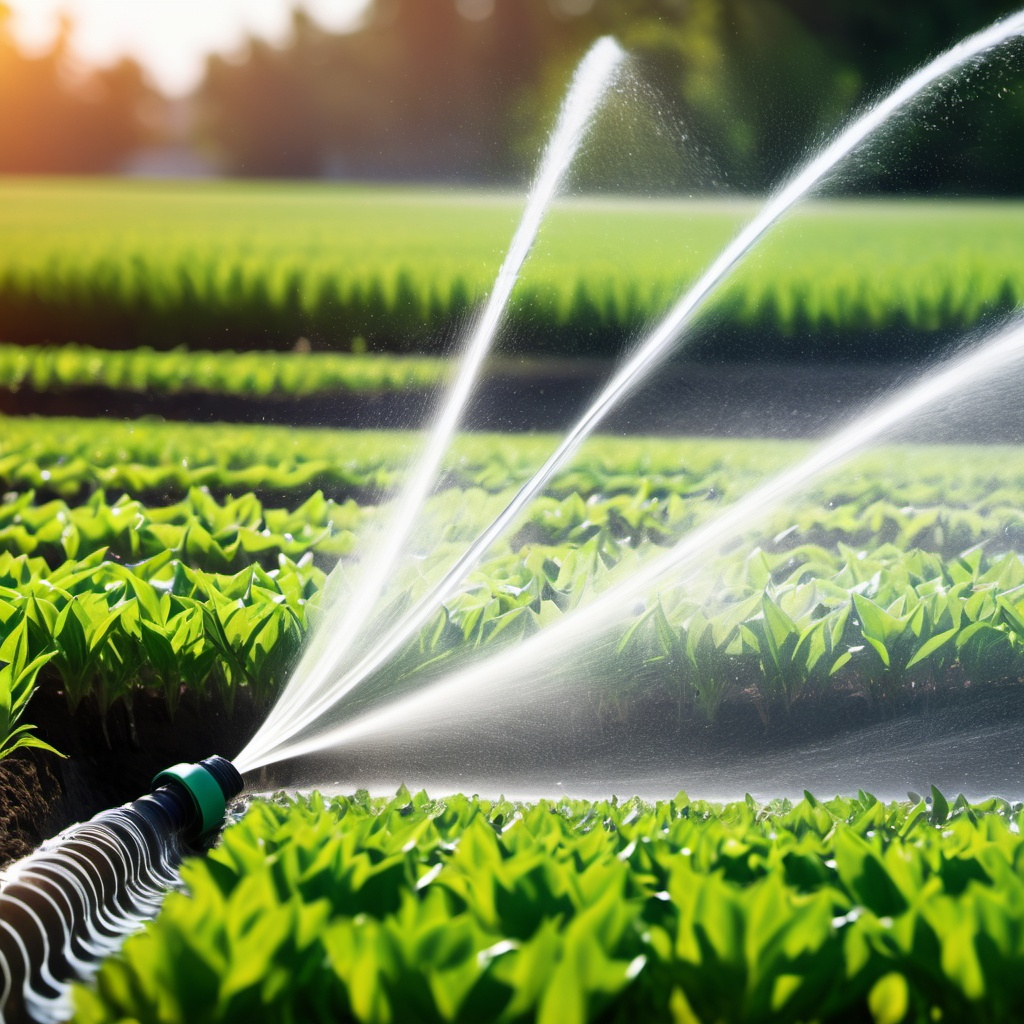
Drip Irrigation
Drip irrigation is a highly efficient technique that delivers water directly to the roots of plants through a network of tubing, emitters, and valves. This method minimizes water wastage by providing a slow, consistent supply of moisture, which is ideal for precise watering needs. It is particularly effective in arid and semi-arid regions where water conservation is crucial. Drip irrigation systems can be customized to fit various plant types and soil conditions, making them versatile for both small gardens and large-scale agricultural operations.
Sprinkler Irrigation
Sprinkler irrigation involves the distribution of water over plants in the form of droplets, mimicking natural rainfall. This technique uses a system of pipes and sprinkler heads that can be stationary or moveable. Sprinklers are suitable for a wide range of crops and are effective for large fields, lawns, and gardens. Modern sprinkler systems can be automated with timers and sensors, ensuring efficient water use and reducing manual labor. However, they can be less efficient in windy conditions or on uneven terrain where water may be lost to evaporation or runoff.
Furrow Irrigation
Furrow irrigation is a traditional method where water is directed into shallow channels (furrows) between rows of crops. The water flows through the furrows by gravity, infiltrating the soil and reaching the plant roots. This method is particularly suitable for row crops like corn, soybeans, and potatoes. While furrow irrigation is relatively simple and cost-effective, it can lead to uneven water distribution and soil erosion if not managed properly. It is best used in areas with flat or gently sloping terrain.
Subsurface Irrigation
Subsurface irrigation involves placing a network of pipes or tubing below the soil surface, allowing water to be delivered directly to the root zone. This method reduces evaporation and surface runoff, making it highly efficient for water usage. Subsurface irrigation is particularly beneficial in areas with high evaporation rates or where surface irrigation methods are impractical. It requires careful installation and monitoring to ensure proper function and avoid clogging. It is often used in conjunction with other irrigation systems for optimal results.
Center Pivot Irrigation
Center pivot irrigation is a method where a rotating sprinkler system moves in a circular pattern around a central pivot point, irrigating a large area of crops. This technique is commonly used in large-scale farming operations and is known for its efficiency and ability to cover extensive fields. The system consists of a series of pipes supported by wheeled towers, which rotate around the pivot and distribute water evenly. Center pivot irrigation can be equipped with various technologies, such as GPS and moisture sensors, to enhance its effectiveness and reduce water wastage.
Manual Irrigation
Manual irrigation involves the use of handheld tools, such as hoses, watering cans, or buckets, to water plants directly. This method is often used for small-scale gardening and in situations where other irrigation systems are not feasible. While manual irrigation provides precise control over the amount and timing of water applied, it can be labor-intensive and less efficient for large areas. It is best suited for home gardens, potted plants, and areas where automation is not practical.
Surface Irrigation
Surface irrigation is a method where water is applied directly to the soil surface and allowed to flow over the field by gravity. This technique includes various sub-methods such as basin, border, and flood irrigation. Surface irrigation is simple and inexpensive, making it suitable for small to medium-sized farms. However, it can lead to uneven water distribution and potential soil erosion if not managed correctly. Proper design and maintenance are essential to ensure effective water use and minimize negative environmental impacts.
Automated Irrigation Systems
Automated irrigation systems use technology to control and manage irrigation processes, reducing the need for manual intervention. These systems can include timers, moisture sensors, and weather-based controllers that adjust watering schedules based on real-time data. Automated systems improve water efficiency, reduce labor costs, and ensure consistent watering. They are suitable for various applications, from residential gardens to large agricultural fields, and can be integrated with smart home technologies for enhanced control and convenience.